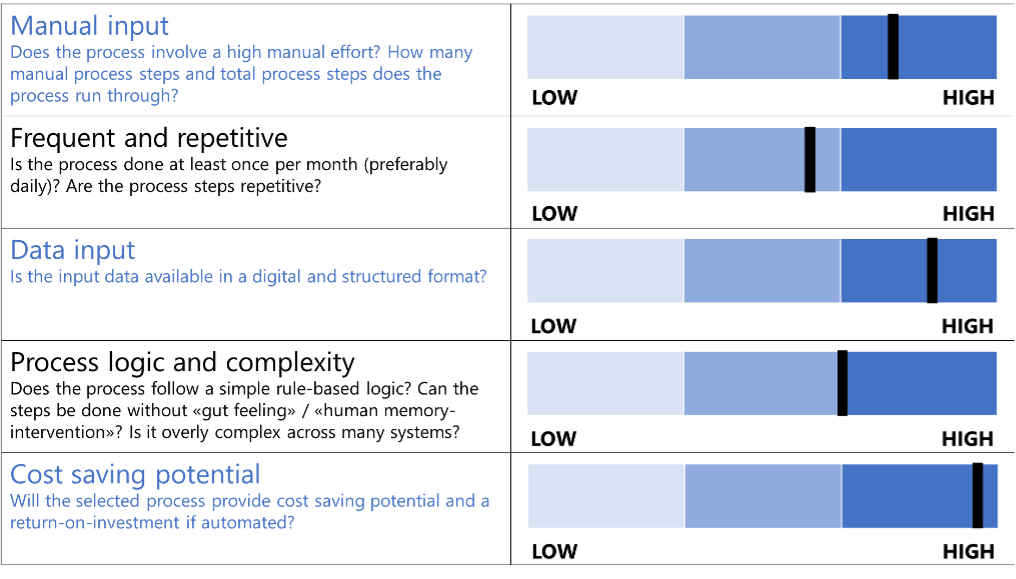Navigating the key automation delivery phases
An example of a robotics project and its end-to-end delivery roadmap
Automation, artificial intelligence (AI) and straight-through-processing are having a profound effect on the global Financial Services (FS) arena. Very few industries in history have seen such a meteoric rise in popularity, with 76% of senior decision makers (1) in FS stating they believe that automation and AI will be fundamental to the success of their business. This explains the desire to adopt new technologies to allow companies to do more-with-less by increasing operational efficiency.
The speed of technology adoption can leave FS firms open to falling down common automation rabbit holes during the implementation of a solution. This blog will be the first of a two part series that will aim to inform decision makers of a typical ‘best practice’ delivery roadmap for an automation project, using a robotics example from Be | Shaping the Future UK’s (Be UK) case studies. The second blog will highlight the common mistakes and misconceptions that are made by decision makers when delivering an automated solution. The desired outcome of these blogs is to encourage companies to reflect on the steps involved before approving investment in these technologies.
Automation discovery phase
Before implementation and delivery plans for potential automated solutions can be proposed, it is imperative that a series of pre-work steps are carried out to create a costed, prioritised short-list of processes for automation.
Many companies make the mistake of not investing sufficiently in the automation use-case due diligence before delivery, and this can lead to a number of pitfalls that will be discussed in the second blog to follow.

Figure 1 can be distilled down into four key phases of work that must take place to make sure the right processes are being automated in the right order.
Stage One – Functional Process Creation
Interviews are held across departments within a firm to record a long list of processes for assessment. The firm itself is best placed to detail its processes and pain-points, so utilising this to guide initial investigations is an effective way to start.
Stage Two – Automation Assessments
Automation assessment workshops should be performed on the long list of each functional area, with key process subject matter experts (SMEs) and process owners being present at these sessions to provide the in-depth process detail. Each process in the list is benchmarked against one-another to reveal their relevance and adequacy for automation, and confirm an estimate for implementation effort.
Processes are ranked in order of quick-win and high-potential to ‘nice-to-have’, creating a prioritised shortlist. The top five-to-ten processes will then be selected for cost-benefit analysis. Information will be required surrounding each of the process’ steps, cost per full-time employee (FTE) time to perform a case, and number of exceptions to achieve the most accurate results.
A common question posed by automation project sponsors is “what characteristics separate processes apart when prioritising them for automation?”

A combination of process characteristics must be considered when deciding which one to assess and prioritise. Generally, if the process is not manual, rule based, in a digital, structured format, and isn’t very frequent or repetitive, then you can rule it out as a candidate for automation.
Further considerations around potential cost savings and delivery costs should be considered. If a process is very complex and spread across many disparate architectural systems, then this will increase delivery cost and operational risk when the process is deployed to live.
Finally, if automating a process does not give compelling reductions in employee handling time and errors, while yielding fast return-on-investment, then it isn’t worth considering for automation.
Stage Three – Process Flow Deep-Dives
A deep-dive analysis per process must be performed to map the end-to-end steps. Before going into a process deep-dive workshop, the process stakeholder may already have process maps or standard operating process documents. These should be leveraged to enrich any workshop that will take place. Process SMEs will help to illustrate the ‘happy path, unhappy path, exception processes,’ and define stakeholders that interact with the end-to-end flow. This information will then be pulled together in an ‘as-is’ process map and process definition document, which will be used to create a ‘to-be’ automation process map and solution design document. These documents are vitally important to any developer that is building automated solutions.
Stage Four – Delivery Plan / Business Case
A business case is formed that will justify investment from a business and deliver tangible benefits. Included in this:
- Project schedules
- Milestones
- Resource and funding requirements
- Cost-benefit analysis
- Risks and dependencies
- Tool suggestions
Automation delivery steps
The delivery flow should only commence once the pre-work steps have been carried out in their entirety. Figure 3 depicts what can be expected during a typical robotic process automation delivery roadmap using a tool like Blue Prism.

Initiation Stage
The focus of the initiation stage is ensuring all information from the discovery phase, including documents and process maps, are in place to ensure a smooth development kick-off. Any tool that is selected must be installed on a client’s development, test and production server, thus setting-up the infrastructure to deliver an automated solution must occur from the offset.
Management Stage One and Two
Using the example in Figure 3, the outcome of management stage one is to have a bespoke application object layer developed for each disparate system that appears in an end-to-end process. A process could be performed in many different software packages, so a detailed object must be created for each. Following on from this, management stage two is where these application objects are stitched together in a process layer. This is where all business logic and rules are contained that govern the flow of data through an automated process. This will represent the first draft solution and initial sandbox testing is carried out.
Management Stage Three
User acceptance testing is conducted using the test cases designed and confirmed in stage two. Often, there will be modifications to the solution here, as testing usually unearths scenarios that the client didn’t think of when describing process flows. This stage will also be the first instance where the solution is trialled in a live environment and closely monitored to see how it reacts when put under stress. If the robot passes the acceptable test rate threshold, sign-off can be given to move the solution into the live-production environment.
Closing Stage
The live solution will be moved to run in the production ‘business as usual’ environment. Typically, there will be further steps or additional processes to automate, and after a project review has been conducted with developers, project managers and client stakeholders, this will be given the ‘go ahead.’
Closing remarks
This first blog sought to demystify the roadmap of a typical robotics project, preparing those embarking on a similar engagement for the potential challenges faced. The key take-away from this blog is to prepare thoroughly before jumping into automation initiatives. Ex-Chief Technology Officer of AWS, Werner Vogel, once said “everything fails all of the time, so plan for failure and nothing fails.”
The consulting team at Be UK have delivered many automation projects using similar frameworks, while adapting them to different client situations and project delivery methodology styles. Reach out to us for guidance and support if your firm are embarking on an automation drive to reduce costs and achieve greater process efficiency in 2022, and we would be delighted to assist on your journey.
Reference: 1 Marketing Magazine. 2021. Conversational AI: the gateway drug to full AI adoption. [online] Available at: <https://www.marketingmag.com.au/hubs-c/opinion-ma-conversational-ai/> [Accessed 7 January 2022].








